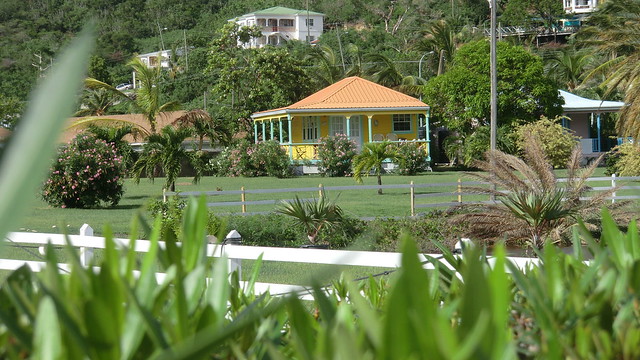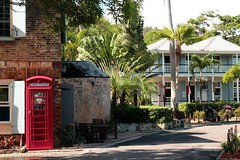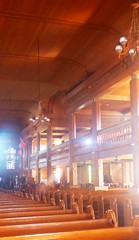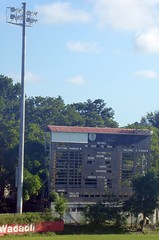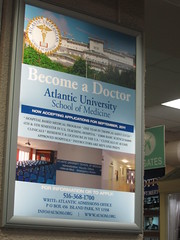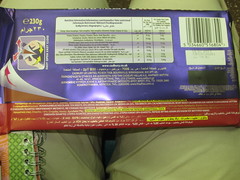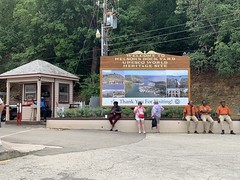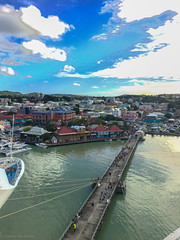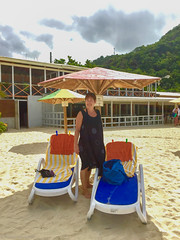 Antigua And Barbuda
Antigua And Barbuda
Antigua and Barbuda (English: /ænˈtɡəbˈbdə/, English: /ænˈtɡwəbˈbjdə/) is a sovereign island country in the West Indies. It lies at the conjuncture of the Caribbean Sea and the Atlantic Ocean in the Leeward Islands part of the Lesser Antilles, at 17.060816°N latitude and -61.796429°W.
The country consists of two major islands, Antigua and Barbuda, which are approximately apart, and several smaller islands, including Great Bird, Green, Guiana, Long, Maiden, Prickly Pear, York, and Redonda. The permanent population is approximately 97,120 (estimates), with 97% residing in Antigua. St. John's, Antigua, is the country's capital, major city, and largest port. Codrington is Barbuda's largest town.
In 1493, Christopher Columbus surveyed the island of Antigua, which he named for the Church of Santa María La Antigua. Great Britain colonized Antigua in 1632 and Barbuda in 1678. A part of the Federal Colony of the Leeward Islands from 1871, Antigua and Barbuda joined the West Indies Federation in 1958. With the breakup of the federation in 1962, it became one of the West Indies Associated States in 1967. Following a period of internal self-governance, it gained full independence from the United Kingdom on 1 November 1981. Antigua and Barbuda is a member of the Commonwealth and a Commonwealth realm; it is a constitutional monarchy with Charles III as its head of state.
The economy of Antigua and Barbuda is largely dependent on tourism, which accounts for 80% of its GDP. Like other island nations, Antigua and Barbuda is vulnerable to the effects of climate change, such as sea level rise, and increased intensity of extreme weather like hurricanes. These cause coastal erosion, water scarcity, and other challenges.
Antigua and Barbuda offers a citizenship by investment program. The country levies no personal income tax.
Etymology
is Spanish for 'ancient' and is Spanish for 'bearded'. The island of Antigua was originally called by the Arawaks and is locally known by that name today; the Caribs possibly called Barbuda . Christopher Columbus, while sailing by in 1493, may have named it , after an icon in the Spanish Seville Cathedral. The "bearded" of Barbuda is thought to refer either to the male inhabitants of the island, or the bearded fig trees present there.
History
Pre-colonial period
Antigua was first settled by archaic age hunter-gatherer Amerindians called the Ciboney. Carbon dating has established the earliest settlements started around 3100 BC. They were succeeded by the ceramic age pre-Columbian Arawak-speaking Saladoid people who migrated from the lower Orinoco River. They introduced agriculture, raising, among other crops, the famous Antigua black pineapple (Ananas comosus), corn, sweet potatoes, chiles, guava, tobacco, and cotton. Later on the more bellicose Caribs also settled the island, possibly by force.
European arrival and settlement
Christopher Columbus was the first European to sight the islands in 1493. The Spanish did not colonise Antigua until after a combination of European and African diseases, malnutrition, and slavery eventually extirpated most of the native population; smallpox was probably the greatest killer.
The English settled on Antigua in 1632; Christopher Codrington settled on Barbuda in 1685. Tobacco and then sugar was grown, worked by a large population of slaves transported from West Africa, who soon came to vastly outnumber the European settlers.
Colonial era
The English maintained control of the islands, repulsing an attempted French attack in 1666. The brutal conditions endured by the slaves led to revolts in 1701 and 1729 and a planned revolt in 1736, the last led by Prince Klaas, though it was discovered before it began and the ringleaders were executed. Slavery was abolished in the British Empire in 1833, affecting the economy. This was exacerbated by natural disasters such as the 1843 earthquake and the 1847 hurricane. Mining occurred on the isle of Redonda, however, this ceased in 1929 and the island has since remained uninhabited.
Part of the Leeward Islands colony, Antigua and Barbuda became part of the short-lived West Indies Federation from 1958 to 1962. Antigua and Barbuda subsequently became an associated state of the United Kingdom with full internal autonomy on 27 February 1967. The 1970s were dominated by discussions as to the islands' future and the rivalry between Vere Bird of the Antigua and Barbuda Labour Party (ABLP) (Premier from 1967 to 1971 and 1976 to 1981) and the Progressive Labour Movement (PLM) of George Walter (Premier 1971–1976). Eventually, Antigua and Barbuda gained full independence on 1 November 1981; Vere Bird became prime minister of the new country. The country opted to remain within the Commonwealth, retaining Queen Elizabeth as head of state, with the last governor, Sir Wilfred Jacobs, as governor-general.
Independence era
The first two decades of Antigua's independence were dominated politically by the Bird family and the ABLP, with Vere Bird ruling from 1981 to 1994, followed by his son Lester Bird from 1994 to 2004. Though providing a degree of political stability, and boosting tourism to the country, the Bird governments were frequently accused of corruption, cronyism and financial malfeasance. Vere Bird Jr., the elder son, was forced to leave the cabinet in 1990 following a scandal in which he was accused of smuggling Israeli weapons to Colombian drug-traffickers. Another son, Ivor Bird, was convicted of selling cocaine in 1995.
In 1995, Hurricane Luis caused severe damage on Barbuda.
The ABLP's dominance of Antiguan politics ended with the 2004 Antiguan general election, which was won by Winston Baldwin Spencer's United Progressive Party (UPP). Winston Baldwin Spencer was Prime Minister of Antigua and Barbuda from 2004 to 2014. However the UPP lost the 2014 Antiguan general election, with the ABLP returning to power under Gaston Browne. ABLP won 15 of the 17 seats in the 2018 snap election under the leadership of incumbent Prime Minister Gaston Browne.
In 2016, Nelson's Dockyard was designated as a UNESCO World Heritage Site.
Most of Barbuda was devastated in early September 2017 by Hurricane Irma, which brought winds with speeds reaching 295 km/h (185 mph). The storm damaged or destroyed 95% of the island's buildings and infrastructure, leaving Barbuda "barely habitable" according to Prime Minister Gaston Browne. Nearly everyone on the island was evacuated to Antigua. Amidst the following rebuilding efforts on Barbuda that were estimated to cost at least $100 million, the government announced plans to revoke a century-old law of communal land ownership by allowing residents to buy land; a move that has been criticised as promoting "disaster capitalism".
Geography
Limestone formations, rather than volcanic activity, have had the most impact on the topography of both Antigua and Barbuda, which are both relatively low-lying islands. Boggy Peak, also known as Mt. Obama from 2008 to 2016, is the highest point on both Antigua and Barbuda. It is the remnant of a volcanic crater and rises a total of 402 meters. Boggy Peak is located in the southwest of Antigua (1,319 feet).
Both of these islands have very irregularly shaped coastlines that are dotted with beaches, lagoons, and natural harbors. There are reefs and shoals that surround the islands on all sides. Because of the low amount of rainfall, there are not many streams. On neither of these islands can sufficient quantities of fresh groundwater be found.
Redonda is a small, uninhabited island located about 40 kilometers (25 miles) to the south-west of Antigua. Redonda is a rocky island.
Cities and villages
The most populous cities in Antigua and Barbuda are mostly on Antigua, being Saint John's, All Saints, Piggotts, and Liberta. The most populous city on Barbuda is Codrington. It is estimated that 25% of the population lives in an urban area, which is much lower than the international average of 55%.
Islands
Antigua and Barbuda consists mostly of its two namesake islands, Antigua, and Barbuda. Other than that, Antigua and Barbuda's biggest islands are Guiana Island and Long Island off the coast of Antigua, and Redonda island, which is far from both of the main islands.
Demographics
Ethnic groups
Antigua has a population of , mostly made up of people of West African, British, and Portuguese descent. The ethnic distribution consists of 91% Black, 4.4% mixed race, 1.7% White, and 2.9% other (primarily East Indian). Most Whites are of British descent. Christian Levantine Arabs and a small number of East Asians and Sephardic Jews make up the remainder of the population.
An increasingly large percentage of the population lives abroad, most notably in the United Kingdom (Antiguan Britons), the United States and Canada. A minority of Antiguan residents are immigrants from other countries, particularly from Dominica, Guyana and Jamaica, and, increasingly, from the Dominican Republic, St. Vincent and the Grenadines and Nigeria. An estimated 4,500 American citizens also make their home in Antigua and Barbuda, making their numbers one of the largest American populations in the English-speaking Eastern Caribbean. 68.47% of the population was born in Antigua and Barbuda.
Languages
The language most commonly used in business is English. There is a noticeable distinction between the Antiguan accent and the Barbudan one.
When compared to Antiguan Creole, Standard English was the language of choice in the years leading up to Antigua and Barbuda's attainment of their independence. The Antiguan Creole language is looked down upon by the upper and middle classes in general. The Antiguan Creole language is discouraged from use in the educational system, and instruction is carried out in Standard (British) English instead.
A significant number of the words that are utilized in the Antiguan dialect are derived from both the British and African languages. This is readily apparent in phrases such as "Innit?" which lit…
Hotels Antigua And Barbuda
 Harbour Island ResidencesBlubber Valley
Harbour Island ResidencesBlubber Valley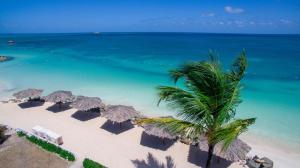 Dickenson Bay Oasis at Antigua VillageSt. John's
Dickenson Bay Oasis at Antigua VillageSt. John's Admiral's Inn and Gunpowder SuitesEnglish Harbour Town
Admiral's Inn and Gunpowder SuitesEnglish Harbour Town Trade Winds HotelBoon House
Trade Winds HotelBoon House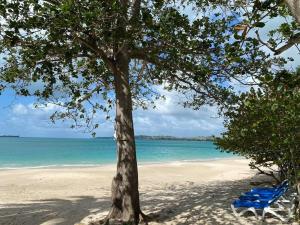 Beach VillaFive Islands Village
Beach VillaFive Islands Village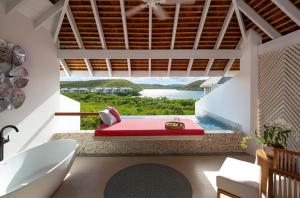 Escape at Nonsuch Bay Antigua - All Inclusive - Adults OnlyPaynters
Escape at Nonsuch Bay Antigua - All Inclusive - Adults OnlyPaynters Bellevue SuitesBuckleys
Bellevue SuitesBuckleys COCOS Hotel Antigua - All Inclusive - Adults OnlyBolans
COCOS Hotel Antigua - All Inclusive - Adults OnlyBolans
